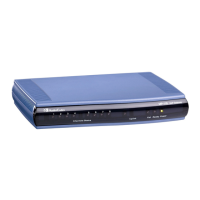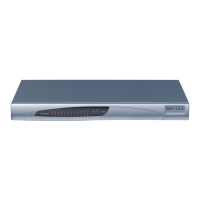User's Manual 252 Document #: LTRT-65417
MP-11x & MP-124
To configure MWI, use the following parameters:
MWIServerIP, or MWISubscribeIPGroupID and ProxySet
CallerIDType (determines the standard for detection of MWI signals)
BellcoreVMWITypeOneStandard
EnableVMURI
24.8 Caller ID
This section describes the device's Caller ID support.
24.8.1 Caller ID Detection / Generation on the Tel Side
By default, generation and detection of Caller ID to the Tel side is disabled. To enable
Caller ID, set the parameter EnableCallerID to 1. When the Caller ID service is enabled:
For FXS: the Caller ID signal is sent to the device's port
For FXO: the Caller ID signal is detected
The configuration for Caller ID is described below:
Use the parameter CallerIDType to define the Caller ID standard. Note that the Caller
ID standard that is used on the PBX or phone must match the standard defined in the
device.
Select the Bellcore caller ID sub standard using the parameter
BellcoreCallerIDTypeOneSubStandard
Select the ETSI FSK caller ID sub standard using the parameter
ETSICallerIDTypeOneSubStandard
Enable or disable (per port) the caller ID generation (for FXS) and detection (for FXO)
using the ‘Generate / Detect Caller ID to Tel’ table (EnableCallerID). If a port isn’t
configured, its caller ID generation / detection are determined according to the global
parameter EnableCallerID.
EnableCallerIDTypeTwo: disables / enables the generation of Caller ID type 2 when
the phone is off-hooked (used for call waiting).
RingsBeforeCallerID: sets the number of rings before the device starts detection of
caller ID (FXO only). By default, the device detects the caller ID signal between the
first and second rings.
AnalogCallerIDTimimgMode: determines the time period when a caller ID signal is
generated (FXS only). By default, the caller ID is generated between the first two
rings.

